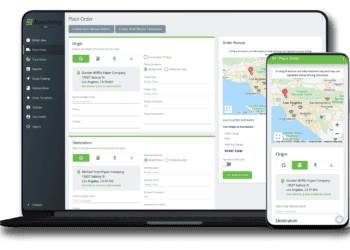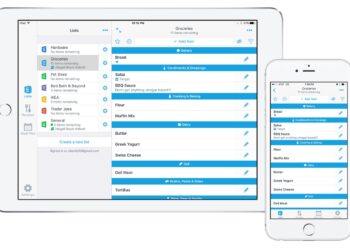These days Artificial Intelligence is widely used across many different areas by all ranges of companies, helping us with many tasks from everyday problems to industry-level challenges. In recent years, AI depended on cloud technologies for the most part, but keeping the actual data processing at the edge nearby has proved to be more efficient in many cases. In this article, you will discover Edge AI operation principles, its advantages, and areas of application.
What are Edge Computing and AI and how they work
Commonplace AI usage remains solid in our everyday lives. It runs on many different devices including smartphones, smart speakers, security cameras, car sensors, and there’s more. To perform actions needed by users, AI analyzes previously gathered data using various techniques like machine learning. At first, AI at Cloud was located at data centers with enough computing power to perform its tasks. Then it was possible to make the next step and implement AI into the software. Now it is used at the Edge.
Instead of processing data in servers of a data science center or cloud, an Edge AI device itself gathers and processes data. After data analysis, AI makes certain decisions based on gathered and processed data. These processes now happen where the actual data was gathered and produced in the first place, in real-time on the actual device. Managing these processes outside the cloud hub is decentralizing at the edge.
AI at the Edge allows not to spend time on establishing an Internet connection, sending the data, and waiting for it to be processed. The latency can be a big problem depending on the quality of the Internet traffic, and it’s not present in devices with Edge AI.
The Difference Between Cloud Computing and Edge Computing
Cloud Computing plays a big part in making AI work, providing data servers for gathering and processing large portions of data. Processing data by AI depends on cloud services in many cases. However, Cloud AI servers can get overloaded if there are many users, – which means that the data will be processed much slower and response latency will increase, which can result in the device not working properly. Internet bandwidth is also a factor that will directly influence the quality of the user experience. Another issue with Cloud Computing is privacy as sensitive information could potentially be gathered and further processed without the knowledge of the customers.
Before using AI it’s necessary to successfully implement an Edge technology first. A properly working Edge AI is crucial for providing users with higher quality service and being competitive on the market at the end of the day.
Advantages of Using Edge Computing and AI
Edge AI is widely used nowadays in many areas and still actively expanding. Edge AI use cases include smartphones, smart speakers, automotive sensors, security cameras, and voice recognition. AI is used in Edge computing a lot thanks to the development of IoT implementations. Thanks to Edge computing it is now possible to reduce problems with the cost, bandwidth, security, latency, and privacy that can appear when using AI in conjunction with cloud services.
Edge AI has the inference part inside in most cases, which means it can analyze gathered data, store it, and provide new data. Machine learning for AI models in Edge devices is usually set in data centers or cloud infrastructure which uses historical data sets. Trained AI models are used later in Edge devices, making possible local interference using deployed local data.
It is also possible that soon some AI training could be initialized right within Edge devices. Using model compression techniques will allow large AI models to be installed even into smaller hardware. Real-time learning will allow the AI to improve and learn constantly while solving customer’s tasks and simultaneously synchronizing newly learned data with peering edges. For now, most modern networks don’t use real-time learning because of the challenges that come with organizing data transmission.
Problems Edge Computing and AI Can Solve
Edge AI can be the perfect option when real-time AI processes need to be close to the data source, combining tools like IoT, AR, VR, robotics, and machine learning. Such use cases include hospitals, factories, workplaces, and learning spaces, where the fastest and optimal digital experience is needed along with protecting sensitive data.
Thanks to IoT networks, devices now can be grouped into a web network, where the data is stored and processed, instead of being sent to a central location. It is still possible to use hybrid models for processing intense workloads at centralized data centers.
How Edge Computing and AI Work
For Edge AI to function properly, it must have enough quality data that can be used to build a statistically relevant model and establish the working process. Good data management workloads and proper examination are needed for the best results. The more complete and quality data is, the less risk it has for the Edge AI to come up with incorrect answers.
Flexible architectures can be useful for enterprise development as you still want to provide customers with easy to install and use solutions that can be operated and supported over time. Devices with Edge AI should have all the necessary computing and storing capabilities for the optimal user experience.
Is Edge AI Worth Your Attention?
When speed and efficiency are the deciding factors, Edge is the perfect solution for business and technology professionals. The main benefits of Edge Computing include decreased response time, reduced traffic cost, and more effective remote usage of applications. Edge Computing can also help to separate all data into several data blocks for more precise analysis.
It is worth noting that the processing power of local Edge AI is much more limited compared to cloud services. Still, there’s always room for growth, so big companies are actively developing more powerful Edge AI units. In enterprise development, the amount of edge-processed data will grow even more. It also will allow saving more money as Edge computing costs less – there’s no need to send so much data to the servers anymore. As autonomous cars and future artificial intelligence are becoming the next big thing, these areas will also demand applicable technologies.
Edge computing still might be seen as an extension to Cloud rather than its full replacement in some cases, but it serves its purpose and opens more possibilities for Cloud Computing which capabilities are unloaded now. Edge Computing only manages workloads that can accomplish tasks in Edge devices in real-time, opening up more ways to distribute computing between the edge and cloud.
The Global Edge software AI market is growing at an extremely high rate. As big corporations have already invested in Edge AI performance capabilities, other companies will have to further invest in this area as well to be competitive. International Data Corporation predicts that in three years more than half of new IT enterprise companies will be operating at the Edge rather than Cloud, and the number of Edge apps will be 800 percent by 2024. This will include facilities, factories, hospitals, warehouses, and stores as well as remote and branch offices.






